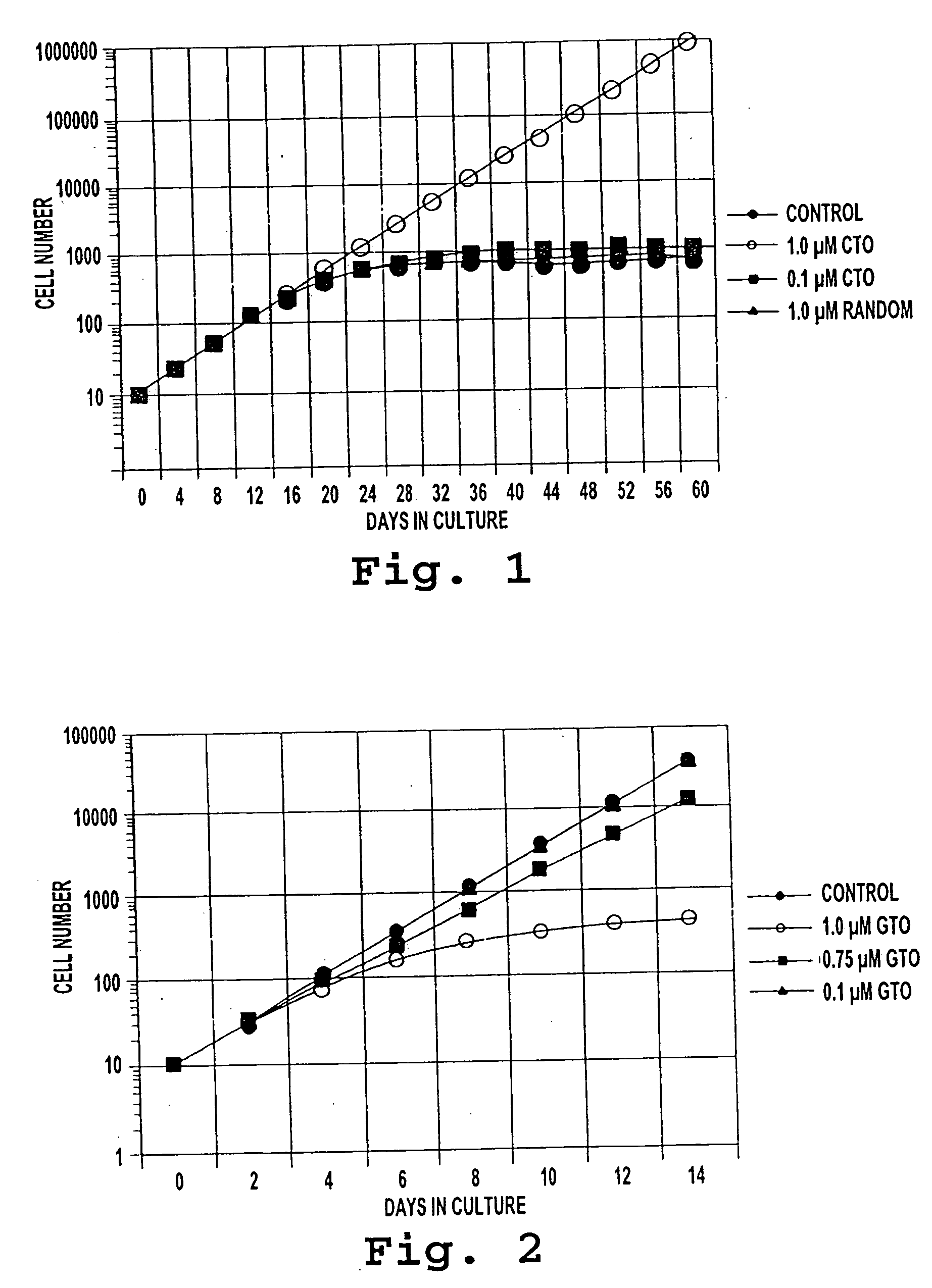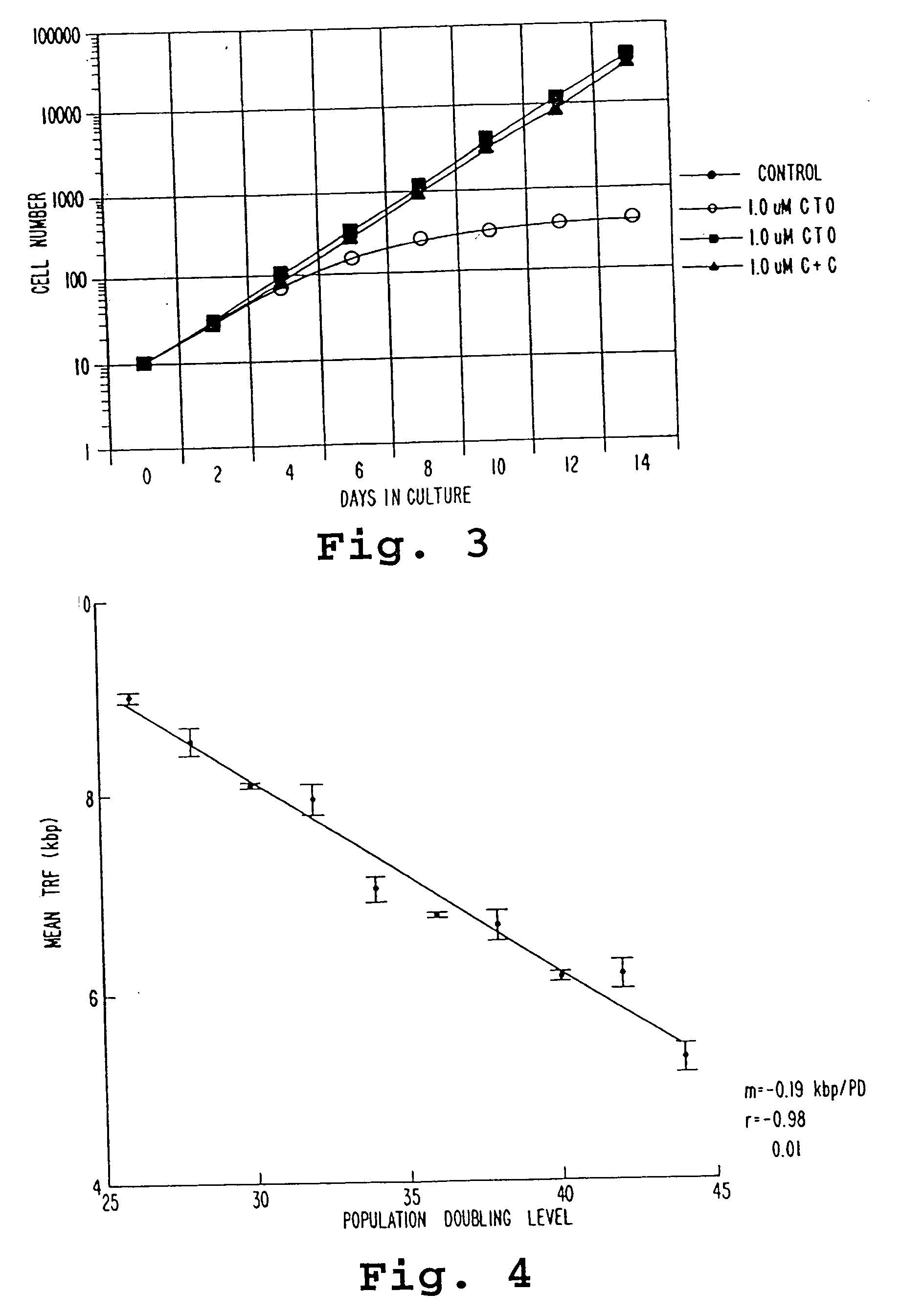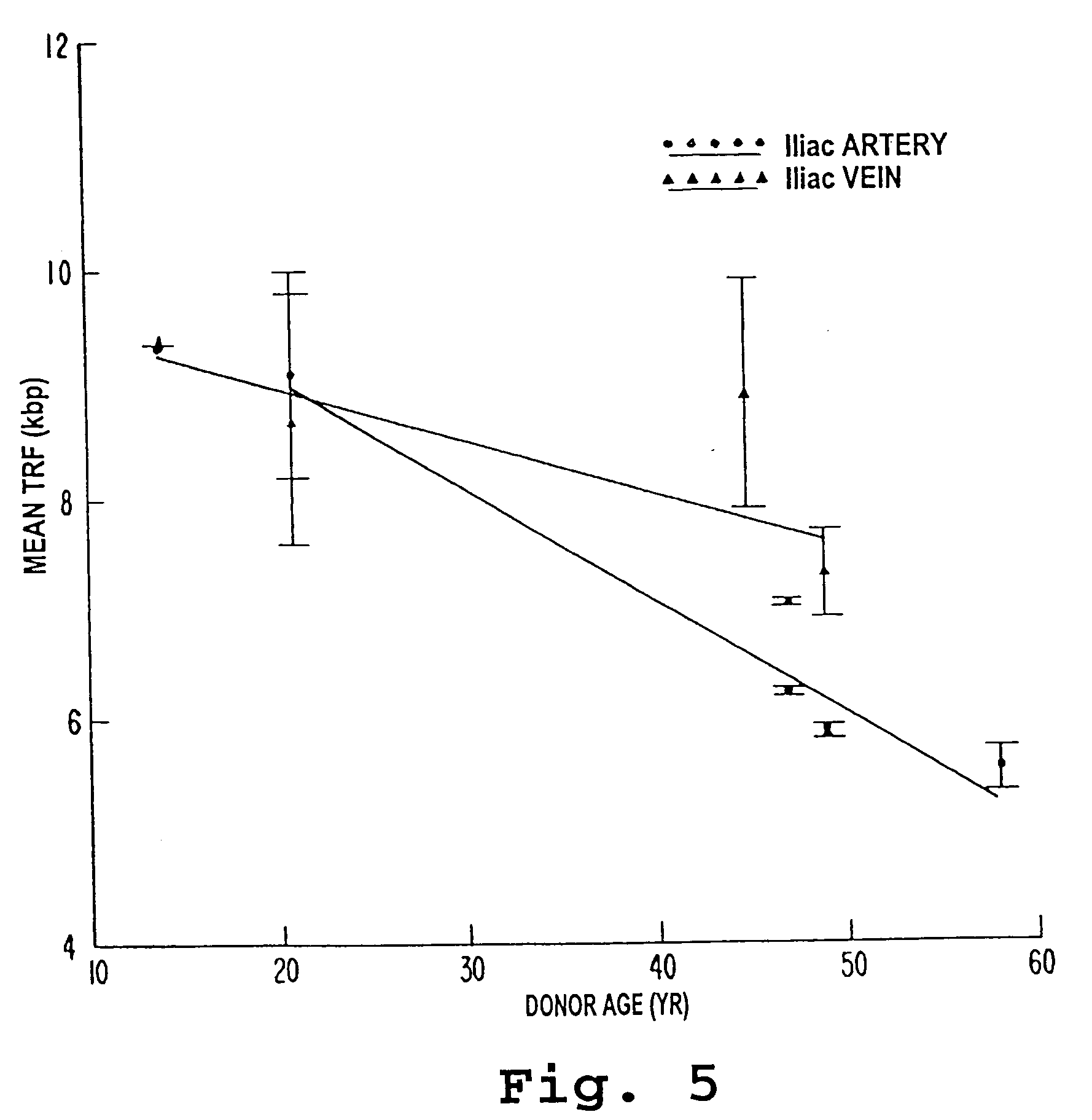Therapy and diagnosis of conditions related to telomere length and/or telomerase activity
a technology of telomerase activity and telomere length, applied in the direction of enzymology, drug composition, fused cells, etc., can solve the problems of unfavorable drug development, unfavorable drug development, and inability to rule out any of these mechanisms, so as to reduce the effect of reducing the cost of treating an individual and reducing the chance of drug becoming
- Summary
- Abstract
- Description
- Claims
- Application Information
AI Technical Summary
Benefits of technology
Problems solved by technology
Method used
Image
Examples
example 1
Telomere Length and Cell Proliferation
[0178] The effects of telomere length modulation on cellular proliferation were studied. An average of 50 bp are lost per cell division in somatic cells. The telomere end is thought to have a single-stranded region as follows (although the amount of overhang is unknown):
(Seq. ID No. 1)5′TTAGGGTTAGGGTTAGGGTTAGGGTTAGGGTTAGGGTTAGCGTTAGGGTTAG GGTTA GGG3′AATCCCAATCCC
[0179] Applicant postulated that loss of this single-stranded overhang should be significantly slowed if cells were provided with a synthetic oligonucleotide of the sequence CCCTAACCCTAA (SEQ ID NO. 2). This oligonucleotide should hybridize to the exposed single-stranded region, and serve as a primer for DNA synthesis by the normal DNA polymerase present in somatic cells. In this way, rather than shortening by an average of 50 bp per division, the telomeres may only shorten by a lesser amount per division, thus significantly extending the number of divisions required before telomere sh...
example 2
Inhibition of Telomerase in Cancer Cells
[0182] One way by which cancer cells are able to escape cellular senescence is by regaining telomerase activity, which permits them to maintain the length of their telomeres in the face of multiple rounds of cell division. The enzyme telomerase contains an RNA complementary to TTAGGG, which allows it to recognize the telomeres and extend them by the addition of additional TTAGGG repeats. In fact, one assay for telomerase uses a TTAGGGTTAGGG (SEQ ID NO: 3) primer and measures the ability of cell extracts to synthesis a ladder of 6 bp additions to this substrate. Telomerase activity in cancer cells is likely to be present in limiting amounts since telomere length is relatively stable (thus only about 50 bp per telomere are added, so that lengthening and shortening are balanced).
[0183] Applicant hypothesized that feeding cells a synthetic TTAGGGTTAGGG oligonucleotide (Seq. ID No. 3) should competitively inhibit the ability of telomerase to elon...
example 3
Telomere Length as a Biomarker
[0185] In the U.S. and Western Europe, atherosclerosis is the principal contributor to mortality from cardiovascular diseases (Ross, 314 N. Engl. J. Med. 488, 1986). Atherosclerosis is characterized by the mural and focal formation of lipid and cell-rich lesions or “plaques” on the intimal surfaces of arterial tissues. This is followed by an age-dependent expansion of the lesion into the lumen, potentially leading to occlusion and to myocardial and / or cerebral infarction (Haust, (1981) in Vascular Injury and Atherosclerosis, ed. Moore, S. (Marcel Dekker Inc., New York), pp. 1-22; Ross and Glomset, 295(7) N. Engl. J. Med. 369, 1976; and Ross, 295(8) N. Engl. J. Med. 420, 1976). Prominent among the mechanisms proposed to explain the pathogenesis of atherosclerosis is the “response-to-injury” hypothesis (Ross, 314 N. Engl. J. Med. 488, 1986; Moore, (1981) in Vascular Injury and Atherosclerosis, ed. Moore, S. (Marcel Dekker Inc., New York), pp. 131-148; an...
PUM
| Property | Measurement | Unit |
|---|---|---|
| total volume | aaaaa | aaaaa |
| temperature | aaaaa | aaaaa |
| time | aaaaa | aaaaa |
Abstract
Description
Claims
Application Information
 Login to View More
Login to View More - R&D
- Intellectual Property
- Life Sciences
- Materials
- Tech Scout
- Unparalleled Data Quality
- Higher Quality Content
- 60% Fewer Hallucinations
Browse by: Latest US Patents, China's latest patents, Technical Efficacy Thesaurus, Application Domain, Technology Topic, Popular Technical Reports.
© 2025 PatSnap. All rights reserved.Legal|Privacy policy|Modern Slavery Act Transparency Statement|Sitemap|About US| Contact US: help@patsnap.com



